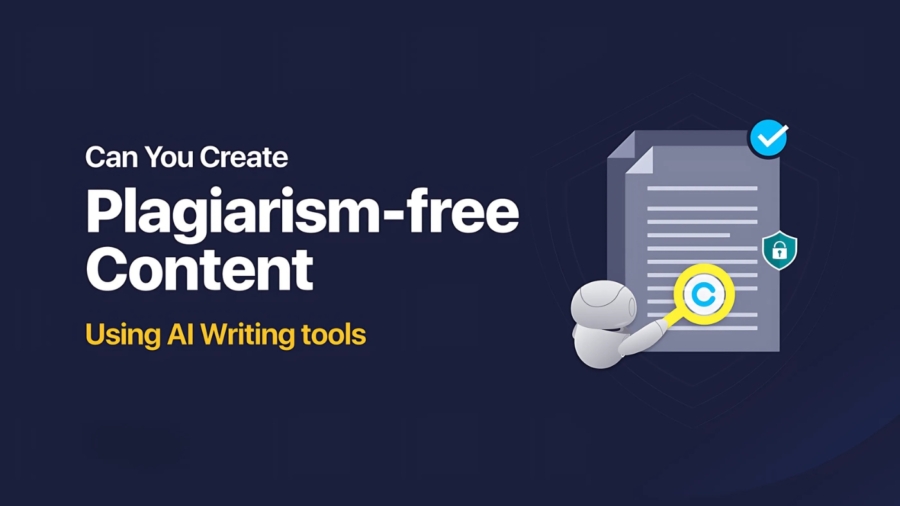In the digital age, where content is king, the demand for original, high-quality blog posts has skyrocketed. With the rise of AI writing tools, creating content has never been easier. However, using AI to write blog posts responsibly is critical—especially when it comes to avoiding plagiarism. Whether you’re a blogger, marketer, student, or business owner, this guide will help you learn how to write plagiarism-free blog posts using AI tools effectively and ethically.
What is Plagiarism and Why Does It Matter?
Plagiarism is the act of copying someone else’s work and presenting it as your own. In blogging, it could be as simple as reusing sentences or paragraphs without credit or as serious as duplicating entire articles. Search engines like Google penalize plagiarized content, and your credibility as a content creator takes a hit. Worse, it can result in legal consequences, especially if the original content is copyrighted.
That’s why ensuring your blog content is original isn’t just a good practice—it’s essential.
Can AI Help You Write Original Content?
Absolutely. AI writing tools like ChatGPT, Jasper, Copy.ai, and Writesonic are designed to assist users in generating human-like content. They pull from vast amounts of data to create sentences, paragraphs, and even entire blog posts. But here’s the catch: while AI can help you write faster and smarter, it doesn’t guarantee originality unless you use it correctly.
Let’s explore how to use AI tools to write a plagiarism-free blog post the right way.
Step-by-Step Guide to Writing a Plagiarism-Free Blog Post Using AI
1. Start with a Clear Topic and Outline
Before you even touch an AI tool, define what you want to write about. Choose a specific topic and create an outline with key points you want to cover. This will help you guide the AI, rather than rely on it to produce the entire article from scratch.
Example:
If your topic is “Best Morning Routines for Entrepreneurs,” your outline might include:
- Importance of a morning routine
- Examples of successful entrepreneurs’ routines
- Step-by-step guide to building your own routine
- Common mistakes to avoid
With a structure in place, you can prompt the AI to generate content for each section, making the output more relevant and manageable.
2. Use Custom and Clear Prompts
AI outputs are only as good as the prompts you provide. Be specific, creative, and detailed when asking the AI to generate content. Avoid using vague commands like “write about morning routines.” Instead, use:
“Write a 150-word paragraph on how waking up early helps entrepreneurs stay productive, including one real-life example.”
Such tailored prompts will help you generate unique content that’s less likely to resemble existing text on the web.
3. Avoid Copy-Pasting Entire Articles
It might be tempting to ask the AI for a 1000-word blog post and paste it directly to your website, but that increases the risk of unintentional duplication. Instead, work with the AI paragraph by paragraph. This gives you the opportunity to revise and personalize the content as you go.
After the AI writes each section:
- Edit the tone to match your brand voice
- Add personal insights, examples, or stories
- Include original research, quotes, or data if possible
4. Use Plagiarism Detection Tools
Even if your AI-generated content feels original, it’s always best to double-check. Tools like Grammarly, Quetext, Copyscape, or Plagscan can scan your content and highlight any matching phrases or sentences. These tools are quick to use and can save you from potential embarrassment or penalties.
If plagiarism is detected:
- Rephrase the flagged content manually
- Ask the AI to reword specific sections
- Replace the duplicated parts with your own words or ideas
5. Combine AI Writing with Your Human Touch
AI is a tool, not a replacement for your creativity. To make your blog post truly unique:
- Insert your own opinions and experiences
- Add commentary or insight the AI might lack
- Use storytelling techniques to make your post engaging
For instance, after the AI gives you a general paragraph about productivity, you could follow up with your personal experience about how a morning walk boosts your mood and work focus.
6. Cite Your Sources (When Applicable)
If you ask the AI to include stats, studies, or quotes, always fact-check the information and cite reliable sources. AI tools sometimes generate fake facts or misquote data. To stay credible:
- Verify every number or claim
- Link to original studies or reputable articles
- Mention the author or source when quoting someone
Proper attribution keeps your content trustworthy and plagiarism-free.
7. Rewrite and Rephrase Where Necessary
AI content sometimes lacks depth or uses overused phrasing. You can polish the output by:
- Varying your sentence structures
- Adding synonyms or changing word order
- Breaking long sentences into shorter, punchier ones
Tools like Quillbot or even AI-powered grammar editors can help with rephrasing, but manual editing is always more reliable for tone and clarity.
8. Optimize for SEO Without Overstuffing
It’s essential to make your blog post SEO-friendly, but keyword stuffing can lead to repetitive or unnatural phrasing—which might unintentionally echo existing content.
Use keywords strategically:
- Place them in headers, intro, and conclusion
- Sprinkle them throughout naturally
- Focus on long-tail keywords for uniqueness
Don’t force AI to repeat keywords in every sentence. Guide it with prompts like:
“Include the keyword ‘plagiarism-free blog post’ once in this paragraph about AI tools.”
Bonus Tips for Creating AI-Assisted Original Content
- Use multiple tools: Try different AI tools for variety and compare outputs.
- Set your tone: Informal, formal, witty—tell the AI what tone you want.
- Humanize your blog: Include metaphors, analogies, humor, and emotion—something AI still struggles with.
- Proofread manually: Always review the final draft for flow, grammar, and voice.
Final Thoughts
AI writing tools have changed the game for content creators. They can speed up the process, spark creativity, and reduce writer’s block. But originality should always be your priority. Writing a plagiarism-free blog post using AI is entirely possible—as long as you treat the tool as a helpful assistant, not a complete solution.
By combining your unique voice with smart AI usage, you can produce engaging, original blog content that adds value to your readers and stands out in a crowded digital space.
Happy writing!



